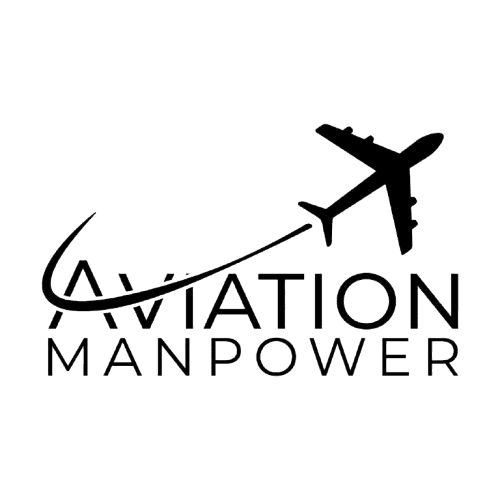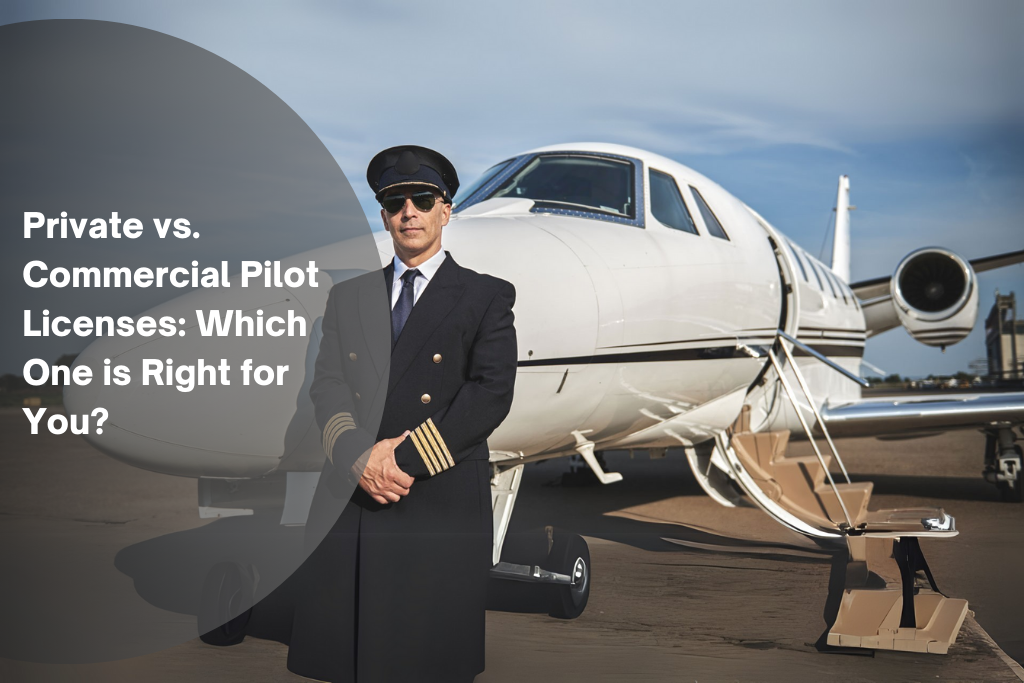Introduction:
The aviation world is full of exciting possibilities, whether you dream of flying for leisure or pursuing a career in the skies. For anyone considering becoming a pilot, one of the first decisions you’ll need to make is whether to pursue a Private Pilot License (PPL) or a Commercial Pilot License (CPL). Both licenses provide the foundational skills needed to operate aircraft, but they differ significantly in terms of requirements, cost, and career opportunities.
Choosing between a PPL and a CPL can be overwhelming, especially if you’re unsure about your long-term goals in aviation. While a Private Pilot License offers more personal freedom, allowing you to fly for fun, a Commercial Pilot License opens the door to paid flying jobs, such as working for airlines, charter companies, or even as a flight instructor.
To help guide you through this important decision, we’ll explore the key differences between the two licenses and offer some advice on which path might be best for you. Additionally, we’ll discuss how aviation recruiters, aviation job recruitment agencies, and the best aviation recruitment agencies can help you chart your career course, whether you’re just starting or already in the aviation industry.
What is a Private Pilot License (PPL)?
A Private Pilot License (PPL) is the most basic type of pilot certification, and it’s ideal for those who want to fly for recreational purposes or to use an aircraft for personal travel. With a PPL, you’re allowed to fly alone or with passengers, but you cannot get paid for your services. The PPL allows you to fly a variety of aircraft, but it comes with specific restrictions, such as not flying in poor weather conditions or over long distances.
Key features of a Private Pilot License:
- Purpose: Fly for personal and recreational use.
- Cost: Typically less expensive than a CPL due to fewer requirements.
- Training Requirements:
- Minimum of 40 hours of flight time (varies by country).
- Completion of a written exam.
- A practical flight test with an instructor.
- Minimum of 40 hours of flight time (varies by country).
- Privileges:
- Fly as pilot-in-command (PIC) of an aircraft.
- Carry passengers, but not for compensation.
- Fly in visual flight rules (VFR) conditions.
- Fly as pilot-in-command (PIC) of an aircraft.
Advantages of a PPL:
- Lower cost and training time compared to a CPL.
- Flexibility and freedom to fly for personal travel.
- Entry point to more advanced aviation certifications if you decide to pursue a career later on.
However, it’s important to note that a PPL is primarily for recreational use, and while it offers a lot of freedom, it doesn’t open the door to a paid flying career.
Read Also: How to Maintain a Work-Life Balance in the Aviation Industry
What is a Commercial Pilot License (CPL)?
A Commercial Pilot License (CPL), on the other hand, is designed for individuals who wish to pursue an aviation career. Whether you want to become an airline pilot, a charter pilot, or a flight instructor, a CPL is essential. Unlike a PPL, a CPL allows you to fly for compensation, making it the key to unlocking professional opportunities within the aviation industry.
Key features of a Commercial Pilot License:
- Purpose: Fly for compensation or hire, turning flying into a career.
- Cost: More expensive and time-consuming than a PPL due to higher training standards.
- Training Requirements:
- Minimum of 250 flight hours (in most countries).
- Completion of a more rigorous written exam.
- A comprehensive practical flight test.
- Minimum of 250 flight hours (in most countries).
- Privileges:
- Fly passengers or cargo for pay.
- Operate under Instrument Flight Rules (IFR), which allows you to fly in more challenging weather conditions.
- Work for airlines, charter companies, or flight schools.
- Fly passengers or cargo for pay.
Advantages of a CPL:
- Potential for a career in the aviation industry.
- Higher earning potential as a commercial pilot.
- Advanced training that opens doors to higher-level certifications, such as an airline transport pilot (ATP) license.
- More career options within aviation, including working for airlines, cargo companies, or as a corporate pilot.
While a CPL requires significantly more time, money, and commitment than a PPL, it’s the ideal option for individuals seeking to turn their passion for flying into a full-time career.
Key Differences Between PPL and CPL
Let’s break down the core differences between the two licenses to help you make an informed decision:
| Aspect | Private Pilot License (PPL) | Commercial Pilot License (CPL) |
| Purpose | Recreational flying, personal use. | Paid flying, professional aviation. |
| Training Hours | 40 hours minimum. | 250 hours minimum. |
| Cost | Lower (typically $8,000–$15,000). | Higher (typically $25,000–$40,000+). |
| Income Opportunity | None (no paid flights). | Paid flying jobs, career opportunities. |
| Privileges | Fly for fun, carry passengers. | Fly for pay, work for airlines, charter services, etc. |
| Weather Conditions | VFR (Visual Flight Rules) only. | IFR (Instrument Flight Rules) is possible. |
| Medical Requirements | Basic medical exam required. | More stringent medical exam. |
As you can see, the primary difference comes down to the type of flying and the career goals you have. If you’re looking for a way to enjoy flying as a hobby, a Private Pilot License is probably the way to go. But if you envision an aviation career, pursuing a CPL is your path forward.
Which One Is Right for You?
The decision between a Private Pilot License and a Commercial Pilot License depends on your personal goals and circumstances. Here are some questions to ask yourself:
- Are you looking to fly for fun or to pursue a career?
- If your goal is recreational flying, the PPL is a great choice.
- If you’re looking to make a living as a pilot, the CPL is the right option.
- If your goal is recreational flying, the PPL is a great choice.
- Do you have the time and financial resources to commit?
- PPL training is shorter and less expensive, so it’s ideal for those who are just starting or have limited resources.
- CPL requires a significant investment of both time and money, so it’s important to be prepared for the commitment involved.
- PPL training is shorter and less expensive, so it’s ideal for those who are just starting or have limited resources.
- Are you ready for the challenges of professional aviation?
- A CPL involves rigorous training and a high level of responsibility, so it’s perfect for those who are serious about an aviation career.
- A CPL involves rigorous training and a high level of responsibility, so it’s perfect for those who are serious about an aviation career.
How Aviation Recruiters and Job Agencies Can Help
If you’re already leaning toward a Commercial Pilot License, you may want to explore how aviation recruiters, aviation job recruitment agencies, and the best aviation recruitment agencies can help you with career placement once you’ve earned your CPL. These agencies specialize in matching qualified pilots with top employers in the aviation industry.
How aviation recruiters can support you:
- Career Guidance: Offering advice on the best path to take based on your goals and current qualifications.
- Job Placement: Helping you find commercial pilot roles once you’ve earned your CPL.
- Networking Opportunities: Connecting you with airline hiring managers or aviation companies seeking commercial pilots.
- Exclusive Listings: Some of the best aviation recruitment agencies offer access to exclusive job listings in both domestic and international markets.
Conclusion:
Choosing between a Private Pilot License and a Commercial Pilot License is a decision that should be made based on your career aspirations, budget, and level of commitment. A PPL is perfect for those who want to enjoy flying on a personal level, while a CPL opens the doors to professional flying careers with a higher earning potential and more opportunities.
No matter which path you choose, aviation recruiters and aviation job recruitment agencies can be invaluable in helping you navigate the job market once you’re certified. If you’re committed to a career as a professional pilot, working with the best aviation recruitment agencies can give you the support and resources you need to succeed.
FAQs:
1. Can I switch from a Private Pilot License (PPL) to a Commercial Pilot License (CPL)?
Yes, you can! Many pilots start with a PPL and then pursue a CPL later. The transition requires additional training, flight hours, and examinations, but it is a common route for those looking to turn flying into a career.
2. How long does it take to get a Private Pilot License (PPL)?
The time required to earn a PPL depends on the individual, but it typically takes around 3 to 6 months to complete the necessary training and flight hours.
3. How much does it cost to get a Commercial Pilot License (CPL)?
The cost of obtaining a CPL varies by location and flight school, but it typically ranges from $25,000 to $40,000 or more, due to the extensive training required.
4. Do aviation job recruitment agencies only help pilots with a Commercial Pilot License (CPL)?
No, aviation job recruitment agencies help pilots with both PPL and CPL, but they focus on commercial pilots for paid flying roles. Once you have your CPL, agencies can help you find full-time positions.
5. Can I work as a commercial pilot with just a Private Pilot License (PPL)?No, you need a Commercial Pilot License (CPL) to be paid for flying jobs. A PPL allows you to fly for personal use, but you cannot accept compensation for your services.

